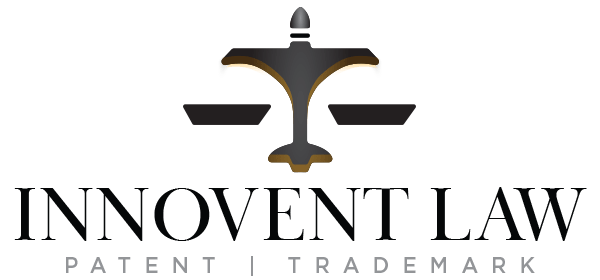The USPTO recognizes that sometimes you need to protect your design patent faster than that.
Filing a design patent is a strategic way to protect the unique visual aspects of your product. Design patents are often faster and cheaper to obtain than utility patents, but in some cases, you may need to expedite the process. Normally, the United States Patent and Trademark Office (USPTO) takes around 20 months from the filing date to issue a design patent. However, industries like fashion or technology that move quickly may need patent protection sooner. That’s where the Rocket Docket can help you speed up the process.
In this guide, we’ll explain how to expedite your design patent, the requirements for doing so, and why it might be a smart decision for your business.
What is the Rocket Docket?
The Rocket Docket is a process offered by the USPTO that allows inventors to request an expedited examination of their design patent applications. Typically, the average wait time for a standard design patent is around 20 months, but with the Rocket Docket, this time can be reduced to as little as 6 to 7 months. This is especially important for industries where product designs have a shorter lifecycle, like fashion or consumer electronics.
When Should You Use the Rocket Docket?
Businesses in fast-moving industries, such as fashion, technology, and consumer goods, can benefit from expediting their design patent. For example, in fashion, trends change frequently, and waiting 20 months for a patent may render your design obsolete by the time it’s issued. The Rocket Docket provides a faster solution, ensuring your design is protected while it’s still relevant.
Using the Rocket Docket can also be a great tool for businesses looking to launch products at a particular time, ensuring they have the necessary legal protection before entering the market.
How to Expedite Your Design Patent
The process to expedite a design patent using the Rocket Docket involves a few additional steps and fees compared to a standard design patent application.
1. Meet the Formal Requirements
Filing for a Rocket Docket expedited examination follows many of the same formalities as a regular design patent application, but with a few key differences. Here are the basic requirements:
- Specification: A written description of the design.
- Drawings: Clear, accurate drawings showing every aspect of your design.
- Oath or Declaration: A statement from the inventor declaring that they are the inventor of the design.
- Search Statement: A document outlining the search you conducted to confirm that your design is original. The USPTO requires this search to include specific classifications and relevant keywords used during the search process.
- Information Disclosure Sheet: A summary of all the relevant information you found during your search.
- Additional Fees: Along with the typical design patent filing fees, there is an additional fee for the expedited review.
For a breakdown of design patent costs and the Rocket Docket fees, you can explore more on our Design Patents Pricing page.
Why Expedite a Design Patent?
Expediting a design patent can offer several key benefits:
- Faster Market Entry: With a patent in hand within 6 to 7 months, your business can confidently launch new designs without the risk of copycats.
- Increased Investor Confidence: Investors are more likely to back a product with solid intellectual property protections. A design patent can serve as proof that your product is unique and legally protected.
- Strong Brand Protection: Protecting your designs faster ensures that you maintain a competitive edge in the market. With Rocket Docket, you can safeguard your intellectual property before competitors can replicate your design.
How Long Does it Take to Get a Design Patent with Rocket Docket?
As mentioned, the average design patent application takes about 20 months for the USPTO to issue. With the Rocket Docket, you could receive your design patent in as little as 6 to 7 months. This expedited process allows you to enjoy protection sooner, ensuring that your designs are safe from infringement early in the product lifecycle.
How Much Money and Time Will You Save with Rocket Docket?
While the Rocket Docket involves additional fees, the long-term benefits usually outweigh the costs. Filing for an expedited design patent protects your business sooner, allowing you to confidently launch new designs and products.
- Costs: Expect to pay an additional fee on top of the standard design patent fees. For more detailed pricing, visit the USPTO’s Fee Schedule or our Rocket Docket Pricing Guide.
Time Saved: Instead of waiting for almost two years for your design patent, the Rocket Docket can cut that time down to just 6 to 7 months.
What Do You Need to Start the Process?
If you believe your business would benefit from expediting a design patent, here are the steps you should follow:
- Consult with a Design Patent Lawyer: At Innovent Law, we specialize in helping inventors and businesses protect their intellectual property. Our experienced team can assist you in determining whether the Rocket Docket is right for you.
- Prepare the Necessary Documents: Gather the required documents, including specifications, drawings, and a search statement. If you need assistance preparing these materials, we can help.
- Submit Your Application: Once your documents are ready, submit your expedited design patent application through the USPTO.
Ready to Expedite Your Design Patent?
If you’re ready to take the next step and expedite your design patent, schedule a free discovery call with our team at Innovent Law. We specialize in navigating the complexities of design patent applications, including the Rocket Docket process.
For more information, check out our guide on Design Patents or contact us directly to learn how we can assist you in protecting your valuable designs.
Interested in learning more about how to expedite your design patent?
Schedule a free discovery call with our team today.
Innovent Law helps innovators protect, maintain and defend patent, trademark, copyright, and other intellectual property rights in the United States and around the world.
